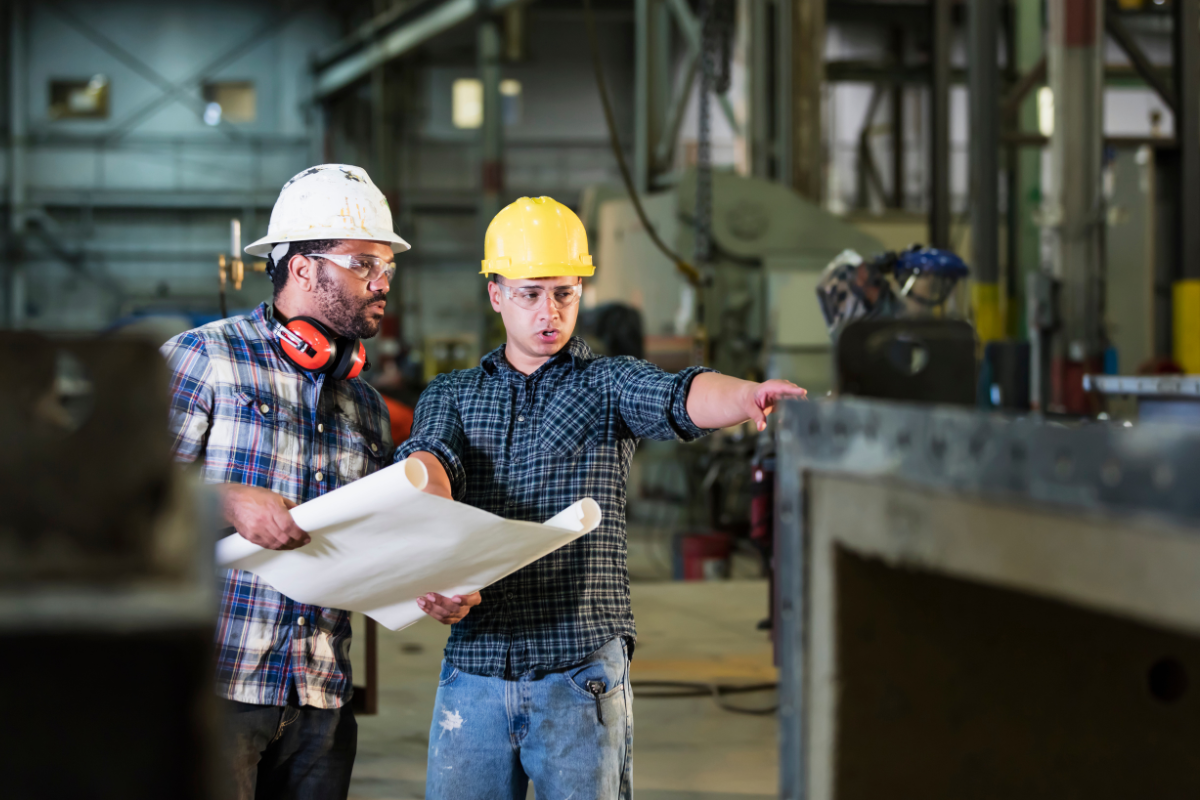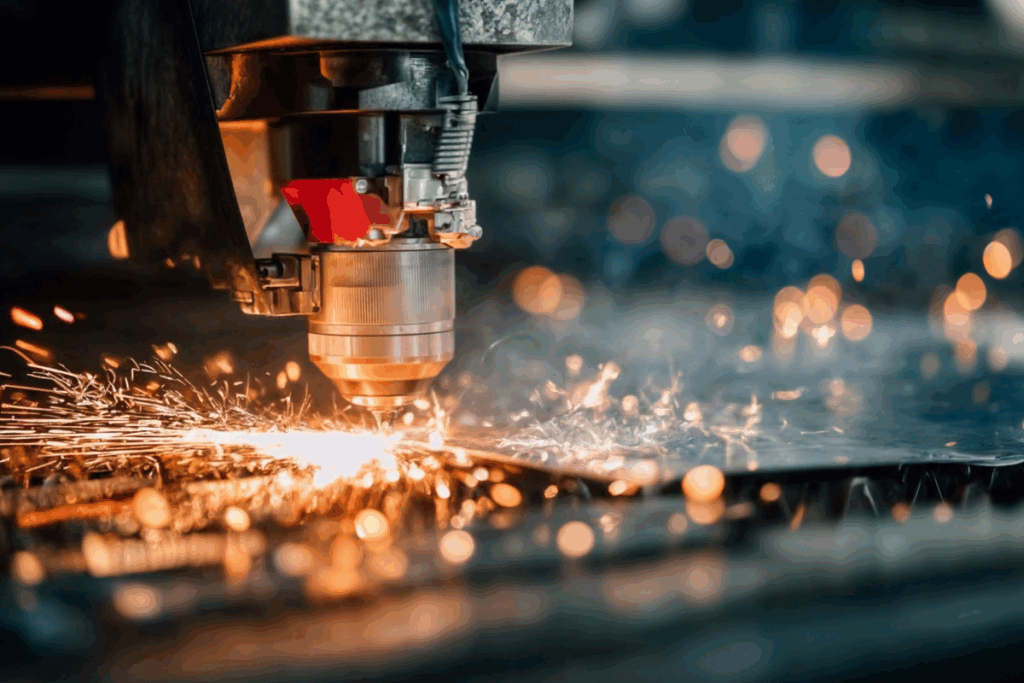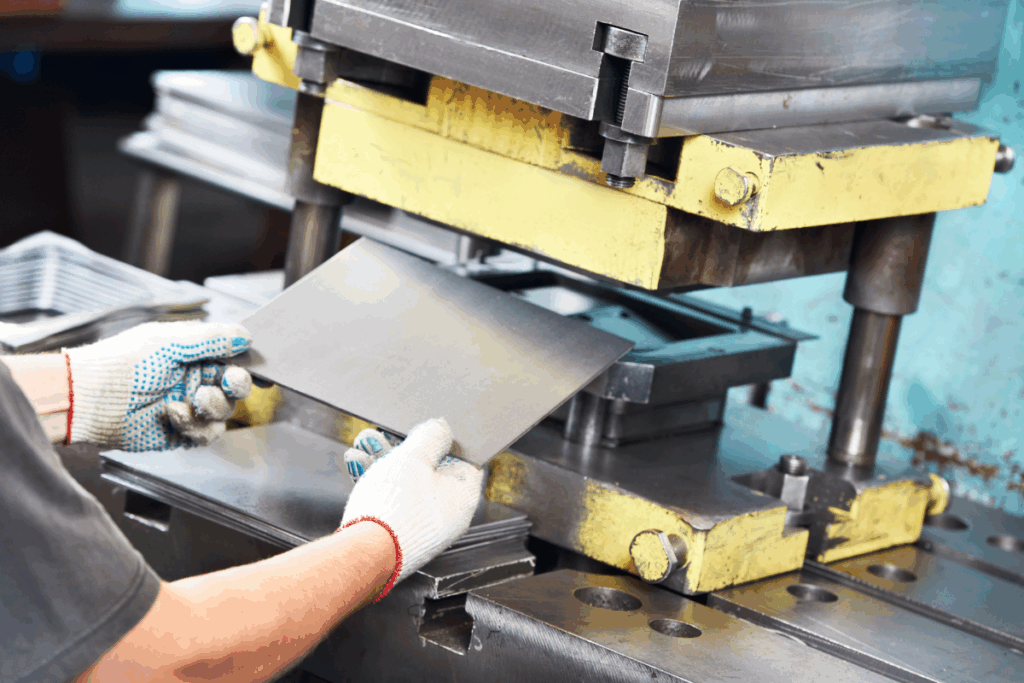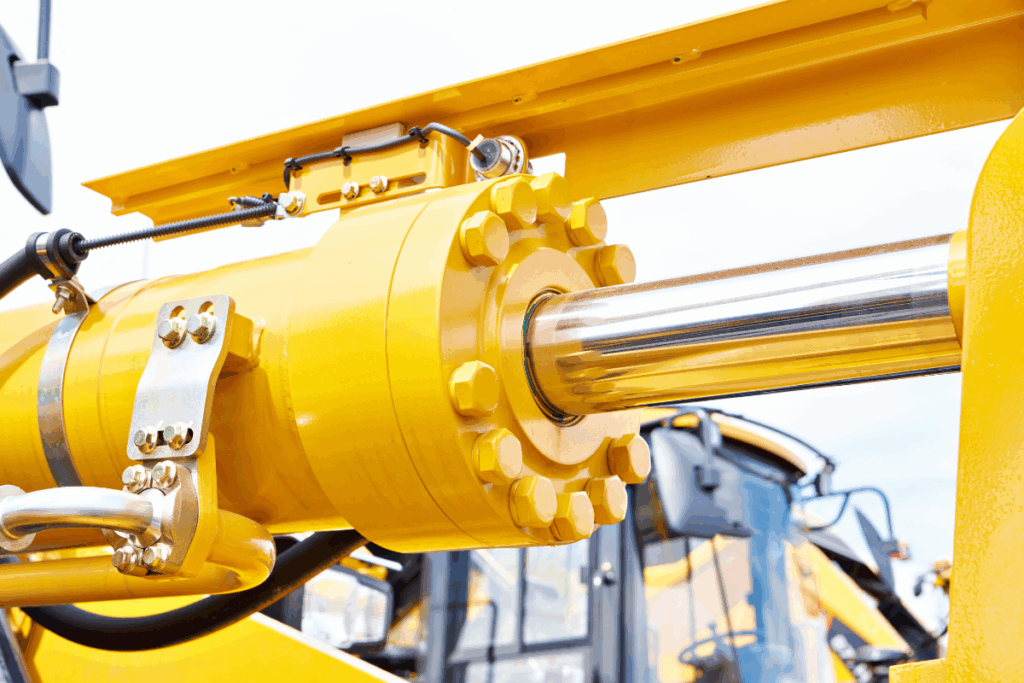At AC Fabrication & Assembly Solutions, we’ve instilled a culture of workplace safety to help protect our teams and site visitors from mishaps in our offices and on the production floor.
Whether people in our space are operating heavy equipment, working with hazardous substances, or simply walking across the office, we’ve optimized safety by implementing several procedures, policies, and protocols that apply to everyone within the facility.
Here are just a few of the policies we’ve adopted to ensure safety is a round-the-clock aspect of our daily operations:
Supplying Our Teams And Site Visitors With Appropriate Safety Gear
As soon as anyone steps onto the production floor, they must wear certified personal protection equipment (PPE) to help ensure their safety, including safety gloves, hearing protection, long-sleeve shirts, and eyewear.
Our fabrication and assembly teams are required to wear additional PPE based on their function, such as respiratory masks, non-slip footwear, and more. Additionally, our teams must wear double eye protection when performing tasks that cause particulates to fly into the air.
Training Our Team Members On The Safe And Proper Use Of Equipment And Tools
We ensure all of our team members are fully trained and qualified to use the tools and equipment they need to complete tasks. This goes beyond the day-to-day operation of the equipment to include the successful completion of all associated safety training programs, giving them comprehensive knowledge of machine inspection requirements, emergency procedures, and other relevant policies.
Our production supervisors are available to support team members who need help meeting our operational safety standards. User manuals and other documentation for all of our tools and equipment are also on hand for fast and easy reference.
Read More: About AC Fabrication
Accessible And Visible Safety Checklists Posted On The Production Floor
We post safety checklists at each workstation on our production floor as reminders to our team members the steps they must take for the safe startup, operation, and shutdown procedures of their tools and equipment. Additionally, checklists are posted throughout the facility detailing emergency protocols in the event of a fire or other catastrophic event.
Our safety teams update each checklist as needed to always provide the most current information. A general announcement of the revised information is sent to our entire staff so they can familiarize themselves with any new policies.
Open Door Safety Hazard Reporting Policy
Providing an open-door policy for team members to report potential issues is paramount to the success of our safety program. This policy helps us mitigate potential risks before they escalate into something more serious that can lead to injury.
Our leadership team logs each report and provides a timely response so the issue can be resolved quickly and efficiently. Our production team is usually the first line of defence against potential hazards, and we ensure they’re aware of the proper reporting procedure to help protect everyone from harm.
Regular Safety Audits Conducted By Authorized Personnel
Our leadership teams have appointed authorized personnel to carry out regular detailed inspections of our facility with auditing checklists that cover every aspect of workplace safety. They look for and log everything from required machine maintenance to potential safety hazards, upon which they provide management with recommendations that will optimize workplace safety.
If a mishap occurs, the team will conduct another audit, which will allow them to make potential policy change suggestions for future accident prevention.
Complying With Manitoba’s Workplace Safety And Health Act (WSHA) Guidelines
The Province of Manitoba’s Workplace Safety and Health Act contains strict guidelines and regulations that help ensure workplaces under its jurisdiction are safe and healthy. Our leadership team is proud to comply with the Act to help protect our teams and site visitors from potential dangers and emergencies.
The regulations cover everything for an industrial workplace like ours, including action plans in the event of an emergency, exit route regulations, fire prevention strategies, trip hazard guidelines, and much more. We have deeply familiarized ourselves with every aspect of Manitoba’s WSHA to ensure we always comply with current standards.
Read More: Our Solutions
Giving Production Personnel Ample Restorative Breaks
Working with heavy machinery safely demands its operator’s full attention. However, people become less focused and alert when fatigued, increasing the risk of missing safety protocols that can result in a mishap.
We mitigate these risks by encouraging our team members to take frequent breaks from their tasks, giving them time to rest so they may return to their work refocused and refreshed.
AC Fabrication And Assembly Solutions: Putting Safety First For Better Quality Products
AC Fabrication and Assembly Solutions’ safety policies also help our teams fulfill our customer projects sooner. With minimal disruptions to production due to safety mishaps, projects are processed faster and with a greater focus on specific customer requirements.
With 300 years of combined experience under our belts, we offer unparalleled quality, durability, and service you won’t find with any other supplier, delivered by skilled technicians whose primary goal is to create sustainable growth for our customers.
Contact an AC Fabrication and Assembly Solutions expert at 204-952-1900 or sales@acfabandassembly.com for a custom quote on your next project today!



